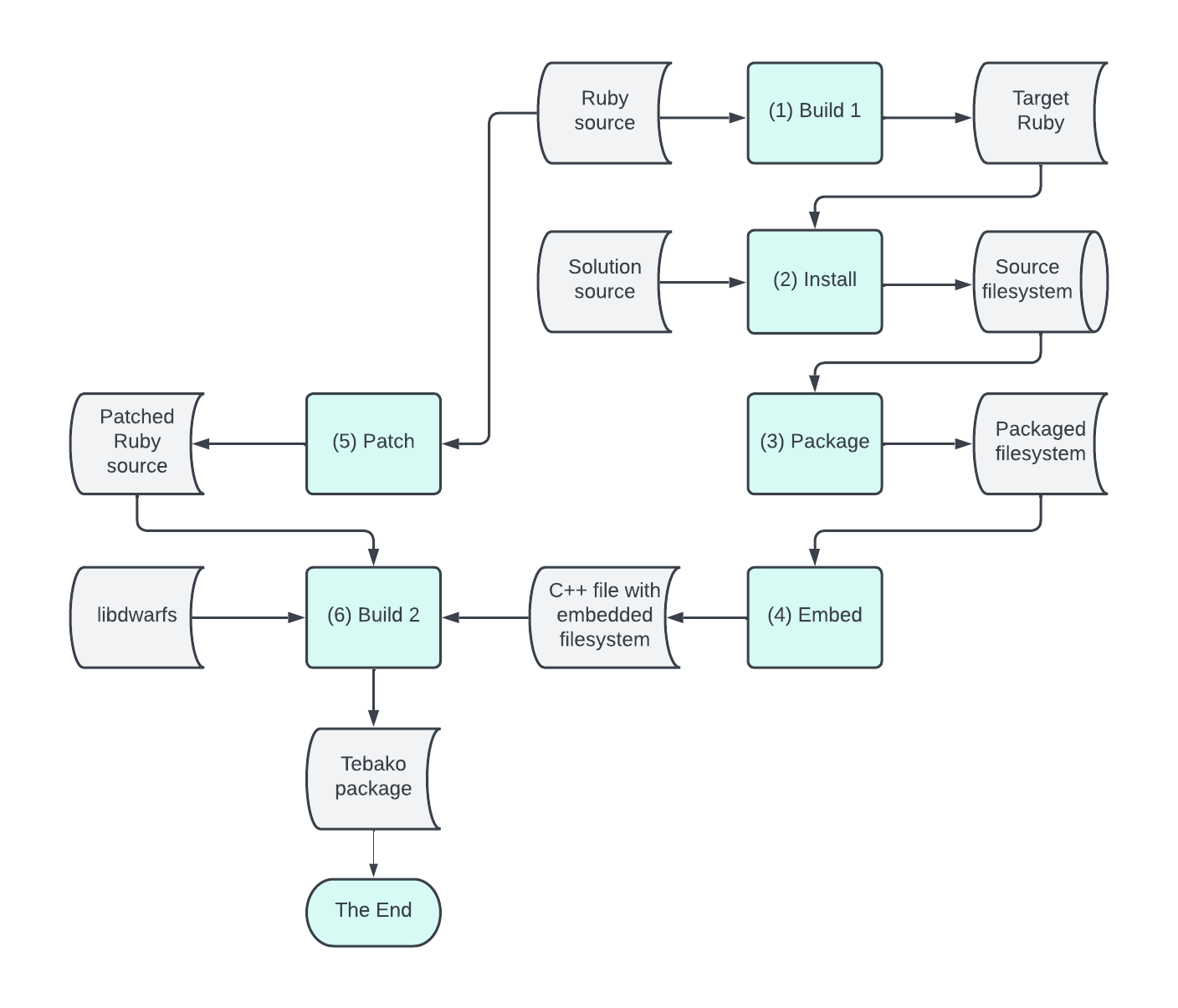Tebako technology and data flow
General
Tebako is an executable packager. It packages a set of files into a single executable binary that allows a user to run a selected file from the packaged software as if it is a mounted filesystem.
Tebako is capable of packaging Ruby applications for Linux (glibc the GNU C Library, and musl libc), macOS, and Windows (MSys) platforms.
|
Note
|
Tebako 0.4.0 provides limited Windows support. It can only package dependency gems without native extensions. |
The package created by Tebako is a patched, statically linked Ruby interpreter with embedded DwarFS — a fast high-compression read-only filesystem. The embedded filesystem contains application source code, including pre-built native extensions and other gem dependencies.
Tebako’s Ruby patches reroute IO calls to the DwarFS access library — libdwarfs.
This library is an integral part of the Tebako project that implements a direct DwarFS access layer, thus eliminating a need for fuse drivers or any other additional support from the operating system.
Tebako packaging data flow
Building the Tebako package is a complex procedure that consists of 6 steps, as shown in the flowchart below.

Recurring packaging runs allow the reuse of some artifacts, but it is not described here for simplicity.
Packaging data flow description
Build 1
Build Ruby with a static Ruby library and static extensions ("target Ruby").
In terms of Ruby configuration, this build implies two options:
--with-static-linked-ext
--disable-sharedIt is worth mentioning that this configuration requires some minor patching of the Ruby source to compile without errors.
Install
Install the solution to be packaged into a pristine environment ("source filesystem").
Depending on the configuration files in the project folder, the Tebako packager supports several scenarios with different installation procedures.
| Scenario | *.gemspec |
Gemfile |
*.gem |
|---|---|---|---|
1 |
No |
No |
No |
2 |
No |
No |
One |
3 |
One |
No |
Any |
4 |
One |
One |
Any |
5 |
No |
One |
Any |
Error |
No |
No |
Two or more |
Error |
Two or more |
Any |
Any |
Of course, the real value comes with scenario 5, but the table below describes other options for completeness.
| Scenario | Description | Installation procedure |
|---|---|---|
1 |
Simple Ruby script |
|
2 |
Packaged gem |
|
3 |
Gem source |
|
4 |
Bundled gem source |
|
5 |
Bundled solution |
|
Package
Create highly compressed, read-only file systems in the DwarFS format ("packaged filesystem") from the directory structure built on the previous step.
Embed
Encode DwarFS filesystem image into a C++ source file using INCBIN macro.
Patch
Patch the target Ruby source to redefine calls to IO functions to calls to the DwarFS access layer.
The packager injects simple preprocessor statements like:
#define read(...) tebako_read(__VA_ARGS__)Where tebako_read is a function implemented by the
libdwarfs library.
The library routes the call either to:
-
the host (calls read); or
-
serves it from the DwarFS image.
Build 2
In the last step, the patched Ruby source is compiled and linked with the embedded DwarFS filesystem and libdwarfs. The output binary is the target Tebako package — a single executable binary that runs the embedded image.
